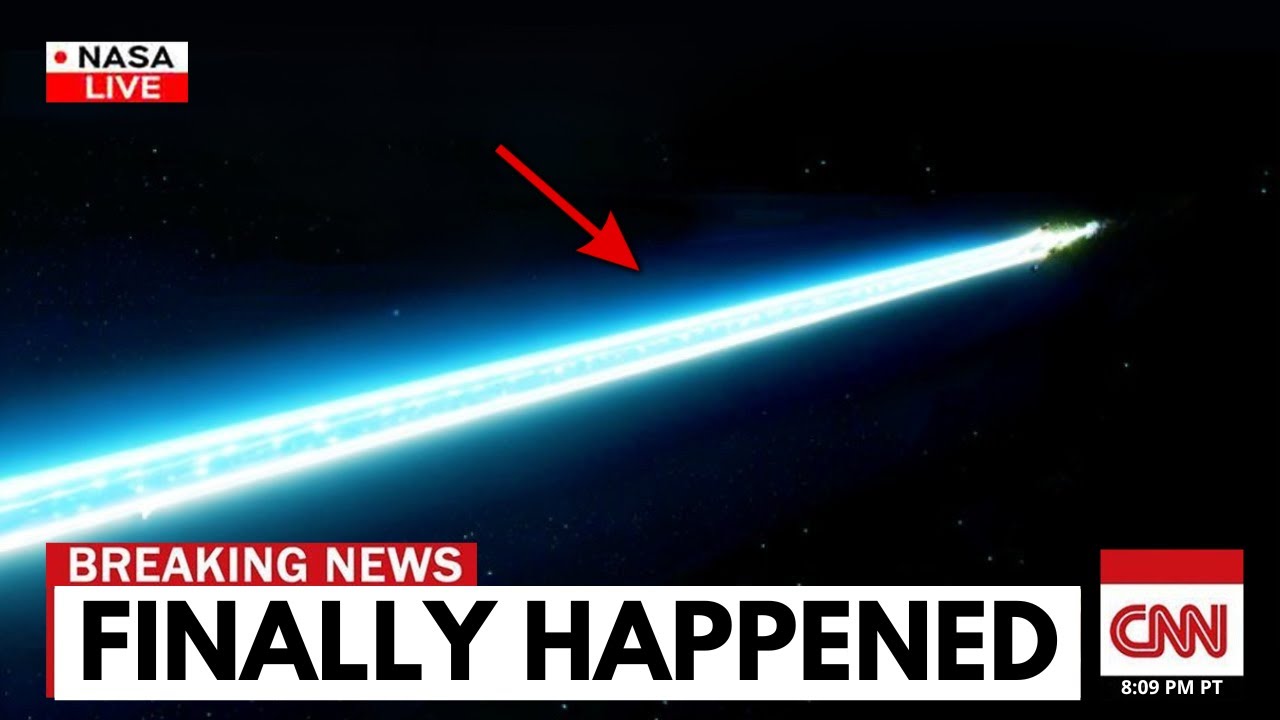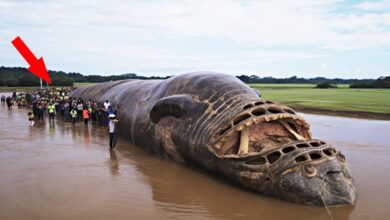Scientists FINALLY FOUND a new way to travel 10 TIMES FASTER THAN LIGHT

For more than a century, we believed the universe had drawn an unbreakable line—a speed limit etched into the fabric of spacetime itself. Nothing with mass could move faster than light. It was Einstein’s gospel, the ultimate cosmic wall. And so, generation after generation, we dreamed within that cage.
Movies gave us warp drives, hyperspace, and wormholes. But science was always there to whisper, “Nice fantasy… but impossible.”
Until now.
Because behind locked laboratory doors and through quiet research leaks, a revolution has begun—one that could shatter everything we thought we knew. Scientists have discovered not one, but several mathematically sound methods of faster-than-light travel. Not just slightly faster. We’re talking ten times the speed of light.
Ideas once dismissed as science fiction are now appearing in peer-reviewed journals. The future isn’t knocking anymore—it’s bending space around our doorstep. And if this technology becomes real, it will change everything: time, distance, even our very understanding of reality.
Since 1905, the speed of light—roughly 299,792 km/s—has loomed over physicists like an invisible ceiling. The closer an object with mass gets to it, the more energy it demands. To actually reach it? Infinite energy. Impossible. Or so we believed.
For decades, this limit was treated as absolute. But there was something our textbooks never emphasized: Einstein’s theory describes motion through space. It doesn’t forbid the movement of space itself.
What if, instead of forcing a ship to plow through spacetime, we could bend spacetime around it? Like standing still while the road moves beneath your feet?
That’s the loophole. The back door in the cosmic code. And it’s no longer just a Star Trek fantasy.
Enter the Alcubierre drive. First proposed in 1994 by Mexican physicist Miguel Alcubierre, it was a game-changer: a “warp bubble” that compresses space in front of a ship and expands it behind. Inside the bubble, the ship doesn’t move at all—it simply rides the distortion like a surfer on a cosmic wave. From the outside, it looks faster than light. But according to relativity, no rules are broken. The ship isn’t moving through space. Space is moving around it.
For years, this idea was dismissed as impossible. The math worked, but the energy cost was absurd—requiring exotic matter with negative energy densities, the kind of stuff we weren’t even sure existed.
And then NASA physicist Harold G. White discovered something extraordinary. While studying the Casimir effect, he observed what appeared to be naturally forming microscopic warp bubbles. Real distortions of spacetime. Suddenly, warp fields weren’t just theoretical. They were measurable. And the energy requirement? Reduced from infinite… to a few hundred kilograms of exotic matter. Still far from easy, but no longer fantasy.
Word spread quietly. Teams in Germany, the U.S., and Japan began working independently on warp physics. In 2024, a group at the University of Potsdam used gravitational-wave simulations to predict what a warp field might look like—and the results were stunning. Not only did their models match theoretical predictions, but they also hinted that similar patterns may already exist in archived data from LIGO.
In other words, warp fields—natural or artificial—might already be out there.
And if that’s true, we could one day reverse-engineer them. Imagine finding the cosmic “footprints” of an alien warp drive and copying it, the way early humans learned to build wheels by studying tracks in the dirt. That wouldn’t just give us faster-than-light travel. It would let us imitate civilizations far more advanced than our own—without ever meeting them.
Today, there are three independent warp drive models with real math behind them: Alcubierre’s original, the modified Natario drive, and White’s energy-efficient bubble geometry. None of them break the laws of physics. They don’t smash through Einstein’s limit—they sidestep it.
And this isn’t driven by science fiction anymore. It’s driven by survival. Earth is fragile. We have no backup planet. If humanity wants to endure—not just as a civilization, but as a species—faster-than-light travel is no longer optional. It’s inevitable.
Proxima Centauri b. TRAPPIST-1e. Close in cosmic terms, but unreachable with our current technology—unless we learn to warp space itself.
But faster-than-light travel raises an even deeper question: what happens to time?
Einstein’s theory says near-light-speed travel causes time dilation—clocks slow, distances contract, mass increases. Push past that speed, and causality might break. Events could happen before their causes. Imagine turning on a flashlight, and the beam hits the wall before your finger moves.
But warp theory offers a way out. Inside a warp bubble, you’re not accelerating at all. You’re standing still, while space moves. No time dilation. No paradoxes. No broken causality. It’s like folding paper so two points touch. You don’t cross the distance—you erase it.
Harold White’s discovery of microscopic warp bubbles suggests this isn’t just theoretical. If these structures naturally exist, maybe they’re not natural at all. Maybe they’re the afterglow of civilizations older than ours, carving highways through the universe with technology we’re only beginning to glimpse.
And here’s the part no one wants to say out loud: if prototypes are being developed, they won’t be announced. They’ll be tested in silence, far from telescopes and headlines. Because once someone controls spacetime, they don’t just win a race. They define the future.
Warp travel isn’t just about going faster. It’s about evolving. Right now, humanity is a Type 0 civilization on the Kardashev scale. A Type I civilization controls the energy of its planet. Type II, its star. But a species that bends spacetime? That’s something beyond Type II. That’s a civilization that doesn’t just live in the universe—it rewrites it.
Warp technology is not the end. It’s the beginning: a door into a new kind of physics, where distance, time, and reality itself become tools. We wouldn’t just be building ships. We’d be building a new version of humanity.
For centuries, we looked up at the stars and imagined roads, planets, and destinations. But the universe was never a map. It was a fabric. And we were never meant to cross it. We were meant to fold it.
Warp technology is no longer just science fiction. It’s becoming engineering. And maybe, just maybe, within this decade, we’ll see the first ripple in spacetime created by human hands.
When that happens, the stars will no longer be far away. They’ll be next door.
And when we step through that door, we may not just change how we travel. We may change what it means to be human.








